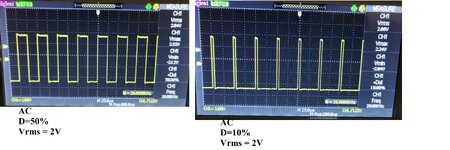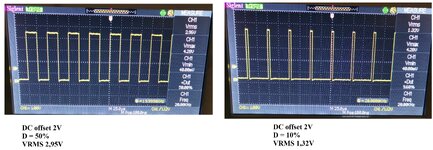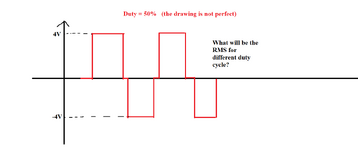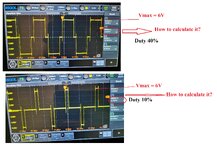Pixelx
Member level 3

As is the case with a square wave signal, without the RMS offset it is not dependent on the fill
And when there is an offset in the RMS signal, it depends on the fill.
How is it derived? There may even be integral calculus, but I would like to understand it in a simple and mathematical way, step by step.
for DC offset the formula works Vrms = Vmax * square root (duty).
for Ac it doesn't work
And when there is an offset in the RMS signal, it depends on the fill.
How is it derived? There may even be integral calculus, but I would like to understand it in a simple and mathematical way, step by step.
for DC offset the formula works Vrms = Vmax * square root (duty).
for Ac it doesn't work






